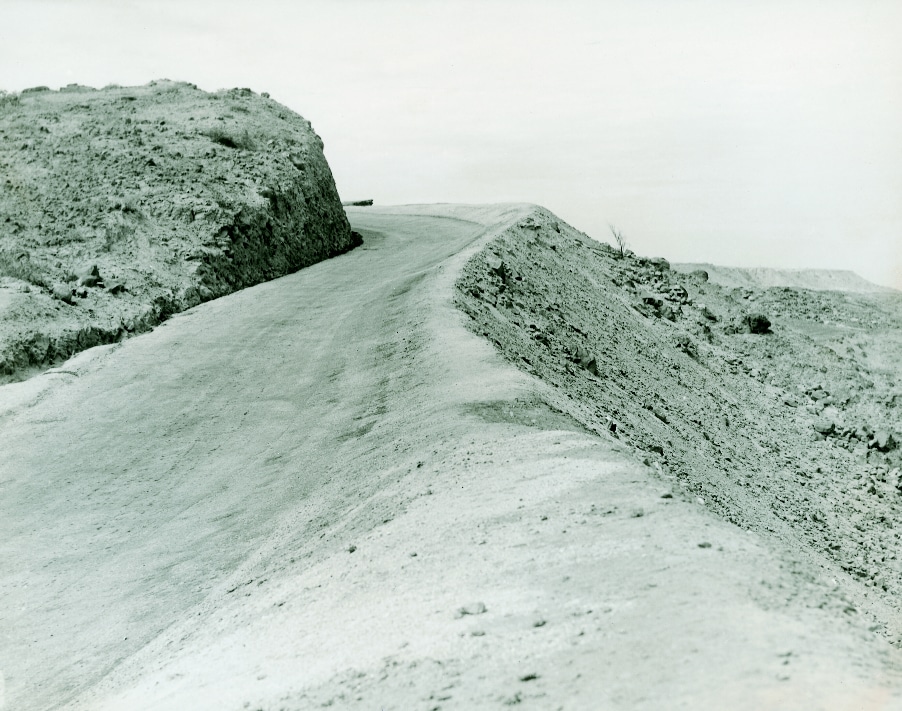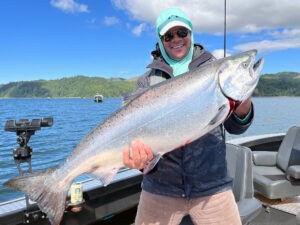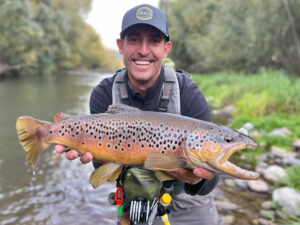For roughly 20 years starting about 1950, the waters off a nondescript bluff on the northern Peru coast produced the most remarkable action the world has ever seen for colossal black marlin, abundant swordfish and striped marlin and huge bigeye tuna.
No other spot could rival it then; no other spot rivals it now. And it seems increasingly likely that no place ever will.
This is the remarkable story of the rise to greatness of Cabo Blanco, the “white cape” — the unparalleled productivity of its glory days and its ultimate, rapid descent into obscurity.
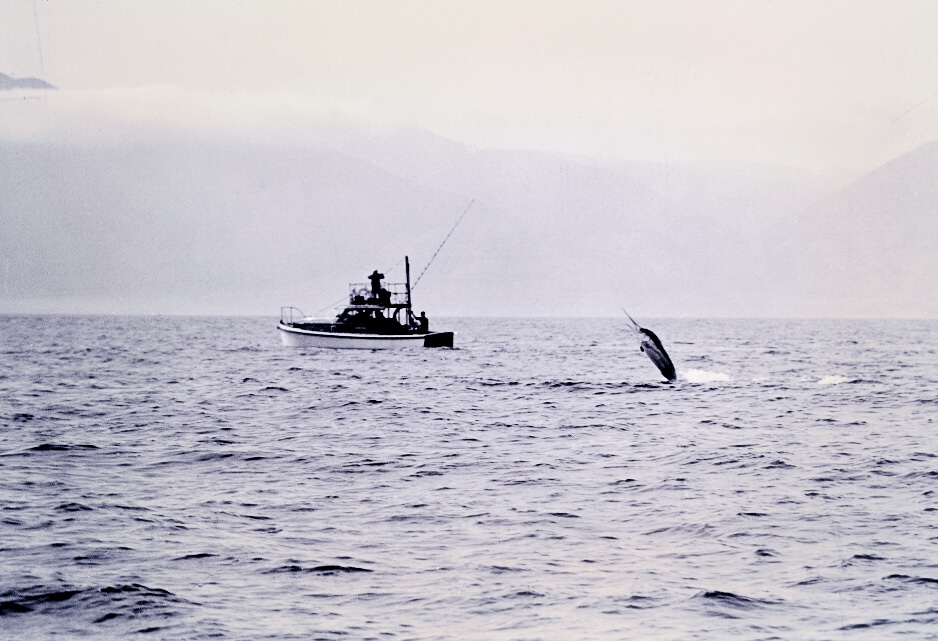
“… it has been the dream of man, particularly those who follow the sea, to view or take a game fish weighing 1,000 pounds.”
That thought begins a June 11, 1952, letter to Michael Lerner in Miami, founder of the International Game Fish Association. The author: a Houston oil-industry executive by the name of Alfred C. Glassell, Jr.
“On the fourth day of April, 1952, Mother Sea for the first time opened her arms and gave forth her first legal 1,000-pound game fish.” (Apparently, Zane Grey had boated the only grander ever taken until then, many years earlier in New Zealand, but not according to what are today considered legal angling ahods.) “This fish was a black marlin taken in the waters off Cabo Blanco, Peru, in the junction of the Humboldt and Ecuadorian [Pacific Equatorial] currents, and it was my great honor and privilege to be the happy angler,” Glassell added, in his letter to Lerner.
Neither man could know that just a year later the names Glassell and Cabo Blanco were to become legends forever etched in the history of sport fishing.
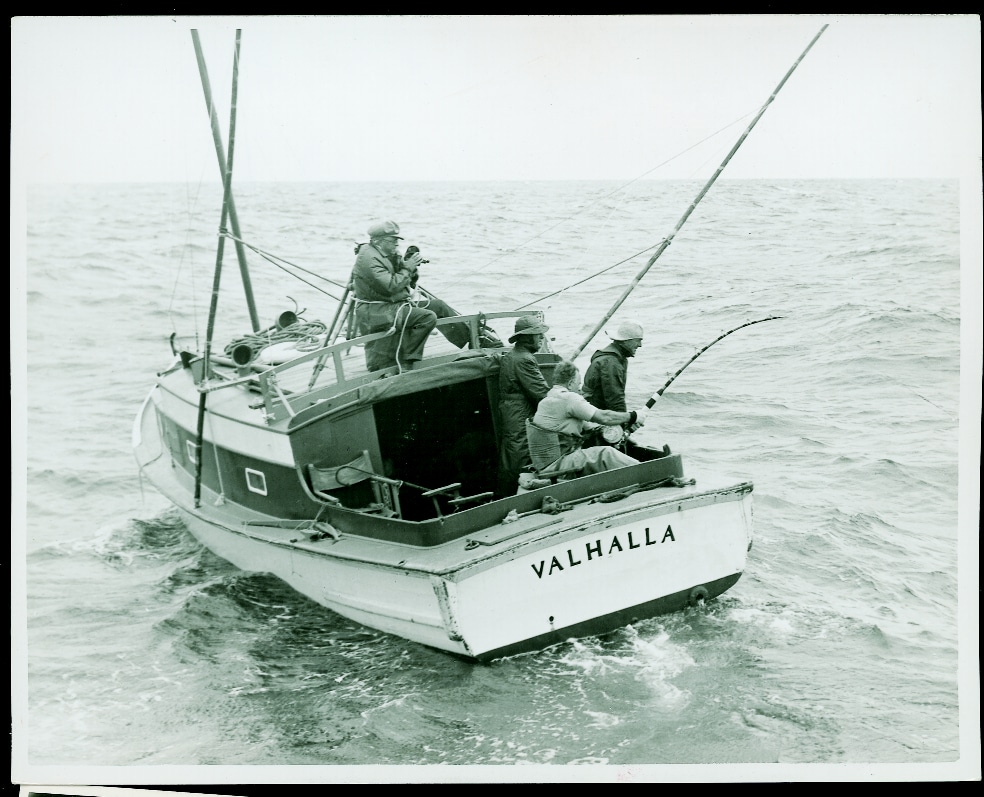
We’ll come back to Glassell, for without his interest and efforts, the phenomenon of Cabo Blanco’s big-game fishing grounds might have been overlooked. But he wasn’t the first to fish there. Thanks to Kip Farrington’s superb 1953 book, Fishing the Pacific (which provided a reliable source for much of the information here), we know that a few adventurous anglers wetted lines and whetted appetites off northern Peru in the 1930s.
One, G.P. Ted Seeley, a business executive from New York, recounted fishing the cape, which sits about 250 miles south of the equator, for 17 days in 1939 — but hardly in what we’d consider an acceptable sport-fishing vessel by modern standards. Seeley’s 60-foot diesel “motor sailer” had no fighting chair nor anything resembling stand-up gear. Using a piano stool as a fighting chair, “he was blithely going out for some of the biggest game fish in the world,” Farrington writes.
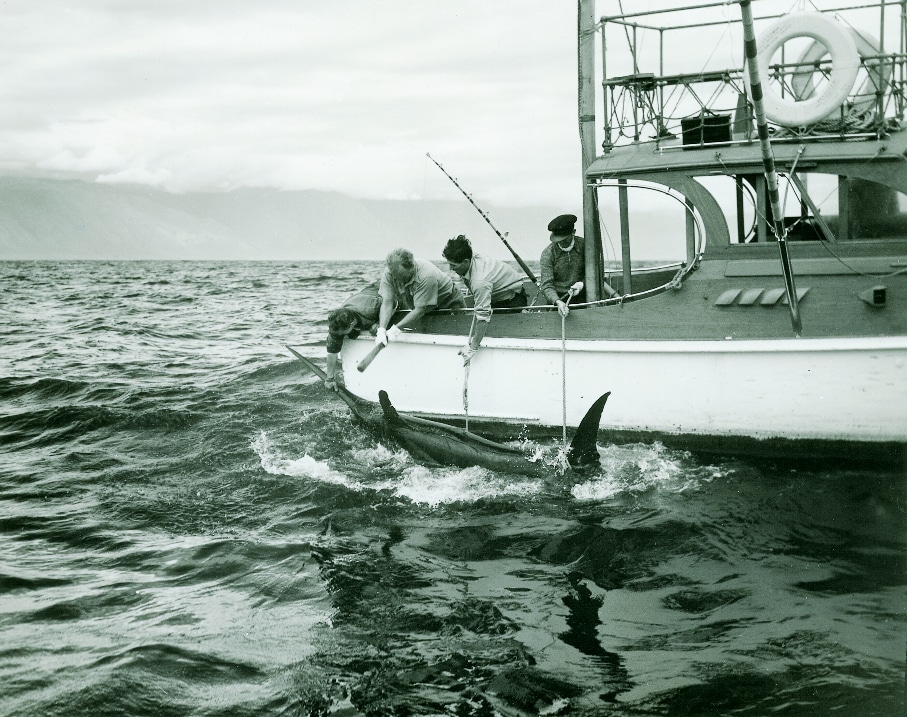
And somehow Seeley managed to land a couple of the black marlin that he hooked, both more than 700 pounds (big now; enormous back then).
But, more to the point, Seeley had set the stage for further exploration by Glassell a decade later, proving that huge fish patrolled the waters here. Besides what Seeley caught, he reported sighting more than 50 blacks (though Farrington speculates some may have been big broadbill) in his half-month at Cabo Blanco.
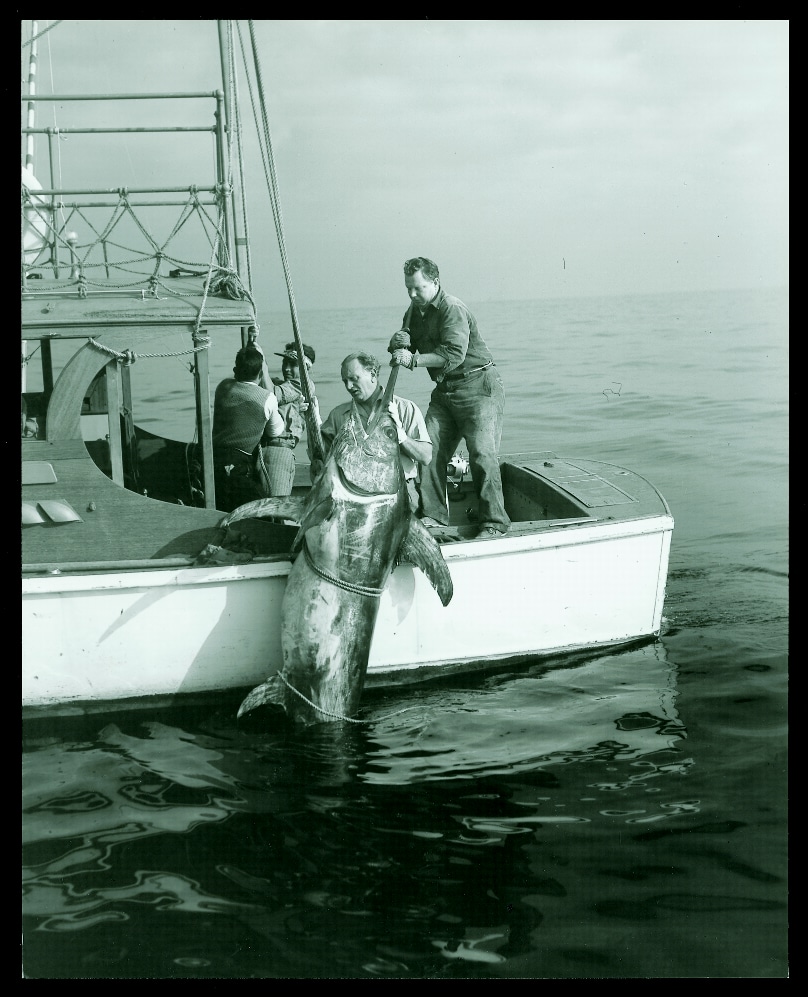
Michael Lerner himself came down in 1940 but caught no blacks. However, he was amazed to see so many broadbill at the surface. Swordfish come to the top during the day to warm themselves after long, cold nights spent on the hunt and often show little interest even in live baits cast right to them. But some of these swords surprised Lerner in their willingness to strike and their size (he boated a 638-pounder).
Lerner also found great entertainment in tussling with yet another apex predator that he hadn’t expected: huge Humboldt squid. The 8-foot, 150-pound mollusks swarmed just offshore at night.
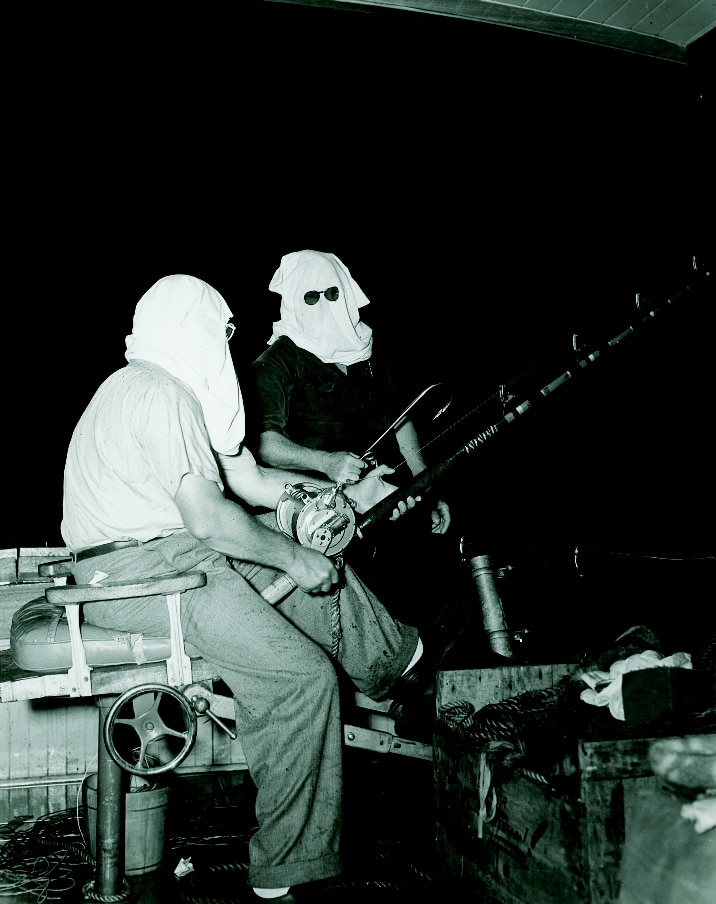
Lerner, his friends and crew quickly learned to protect themselves from quarts of black ink with which these squid showered the cockpit by donning masks made from sheets, completely covering their heads except for the two dark holes cut out for the men to see through. The effect, as historic photos show, was at once comical and eerie.
Through the 1940s, a few more anglers — including Farrington — found a way to try their luck off northern Peru. Just before he arrived, in 1951, an 824-pound black had been taken, largest ever in the eastern Pacific, and just after that, Farrington and affluent Peruvian sportsman Enrique Pardo lost an enormous black marlin. They had no doubt the cape held the promise of marlin larger than anyone might have dreamed.
About that time, Glassell got involved with Farrington and Pardo’s efforts to explore the waters off northern Peru. In fact, Glassell had been “looking for great places to fish” he told me from his Houston office during a recent interview, and “studying the oceans of the world for possibilities.” He settled on Cabo Blanco, with its two great currents meeting just offshore, creating nutrient-laden upwellings. They were “trying to figure out how in the world a person would get there” when serendipity struck.

“It turned out that I had a friend who owned a fleet of tuna mother ships,” Glassell says. “One of his ships was in that [northern Peru] area … so he told me I could live on his boat down there.” He knew the waters well, insisting to Glassell, “You’ve got to go to this place!”
The ship actually had its anchorage in Mancora, Peru, about 50 miles north of the cape. “I flew down there on Panagra Airlines, an ancient operation that went from New York and down the west coast of South America. It was flying the newest and most modern airplane, a DC4,” Glassell recalls. The airstrip closest to Mancora (and Cabo Blanco) was and still is in Talara. From Talara he hired a car to drive him to Mancora on what might be best called a trail, but hardly a road.
“We jury-rigged a local swordfish boat [for sport fishing] — a stick [harpoon] boat. Then we went fishing, and we had a hell of a time!” Glassell says. Shortly after that, the three men persuaded Lobitos Oil Company — which held lease to much of the coastal land in the area — to donate a chunk on Cabo Blanco where they might develop a world-class fishing club.
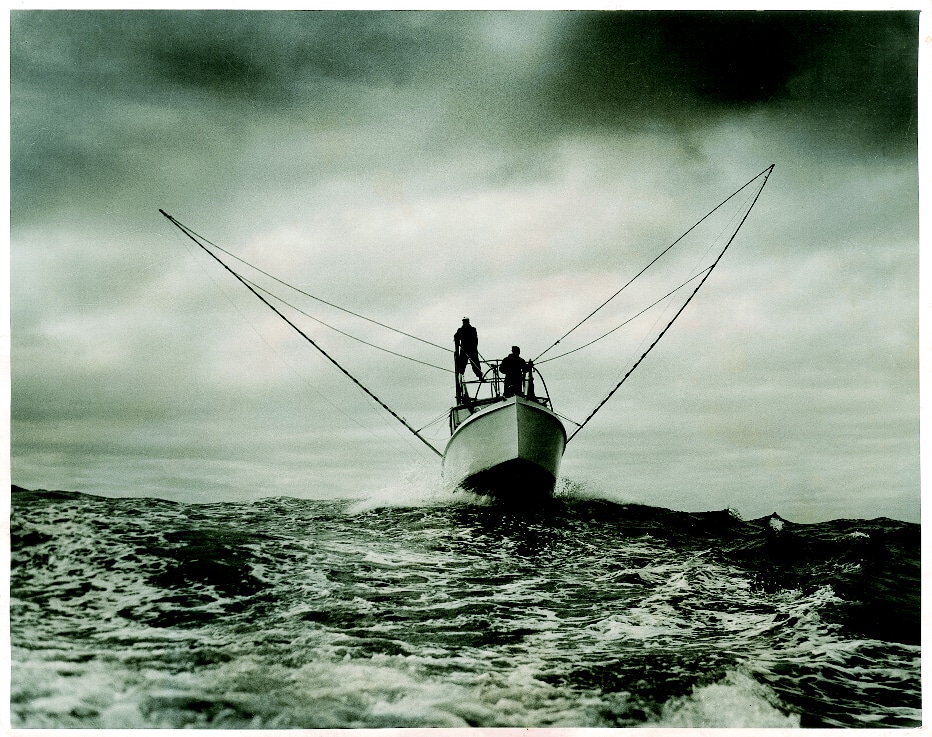
Thus the Cabo Blanco Fishing Club was born. But in 1951, even as construction had just begun, big-game fishermen from all over the world were applying for membership at $10,000 a pop (roughly $80,000 in today’s dollars). Farrington, in charge of choosing members, says he was offered as much as $50,000 (current equivalent of about $400,000) from some of the prospective members who were turned away.
The clubhouse would open its doors with accommodations for 12 in 1953. Soon after, a larger clubhouse would be completed so the facility could accommodate a total of 32 members and guests. The club would also offer what Farrington describes as “the finest tackle room ever built, and tackle lockers …. worktables, line dryers [for Ashaway linen lines; there were no monofilament fishing lines yet] and storage facilities.”
But without waiting for the clubhouse to be completed (staying in a hotel in Talara), Farrington, Glassell and Pardo decided to have three custom sport-fishing boats built strictly for use at the club: a 40-footer and two 38-footers. (They’d add one more 38-footer later.) A far cry from sport fishers today, these wooden boats nevertheless included a flying bridge, enclosed cabin and a fighting chair

The men wanted seaworthy boats since they’d been warned that the waters could be rough, particularly in the Peruvian winter months (summer for those north of the equator). But they hadn’t realized that long offshore runs would be unnecessary, particularly for black marlin; they were soon calling the waters from 1 to 4 miles offshore “Black Marlin Boulevard.” They learned to expect frequent stiff sea breezes from July to November, though the club’s yearbook insists, “it is never too rough to fish.”
Still, Glassell — who usually fished the cape in April and August — recalls the seas as “generally cold and choppy, with 3- to 4-foot waves typical. It reminded me of Soldiers Rip off Nova Scotia.” But Glassell, Pardo and Farrington were soon to realize that a cold wind and stiff swell were small price to pay for fishing beyond their wildest dreams.
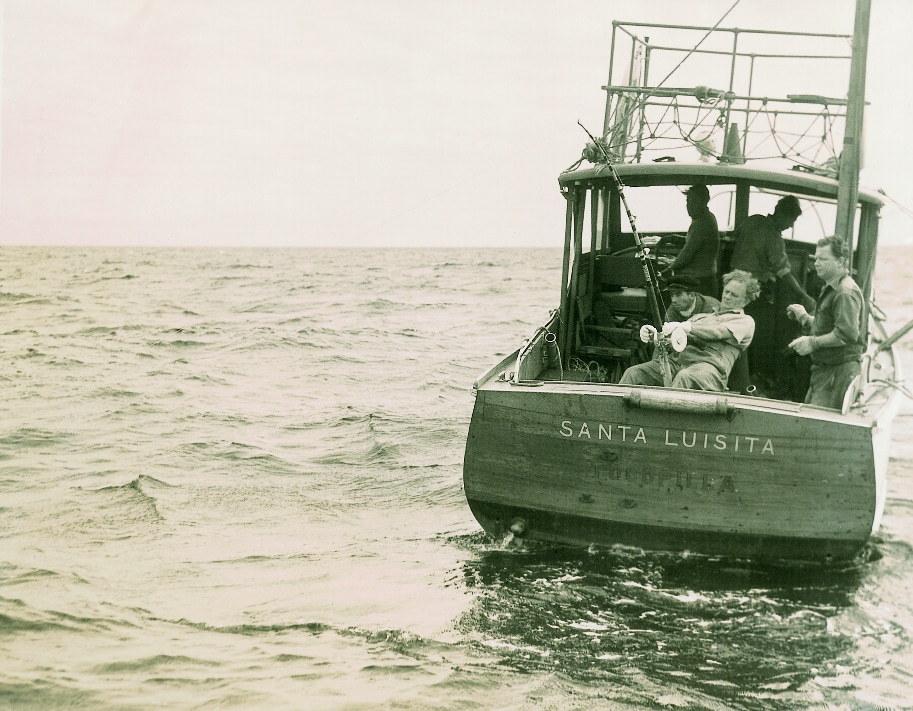
The fishing off Cabo Blanco began to justify the new club well before the facility had been completed. Friday, April 13, 1951, gave Farrington a taste of what lay ahead. As had become the custom here, angler and crew searched for tailing billfish. Most big marlin — blacks and stripes — as well as swords were hooked up not during long hours of trolling. Rather, the amazing abundance of billfish made this mostly a sight-fishing show, with large sierra mackerel or tuna rigged as pitch baits to be tossed out or pulled past sighted tails and dorsal fins.
About 4 miles out, Farrington came across what first appeared to be a stripe’s tail, but when he caught sight of its dorsal, he recognized it as a black — though it was impossible to tell how large. The fish proved hungry, quickly taking the bait. Surprisingly, the black didn’t jump and was at boat-side in about a half-hour. The experienced mate had a clean shot — but the fish’s sheer size left him hesitating. Then it was too late: The fish exploded, greyhounding and jumping. “In the next hour-and-a-half, Juan had the leader 10 more times. … I could not make the boy put the gaff to him, and to this day I blame myself more and more for not having got up and done it myself,” Farrington laments in Fishing the Pacific.
As the wind and seas picked up, the fight went on. Then, late in the afternoon, “The entire footrest of the chair came off and one arm went with it. With the terrific drag on the reel, this catapulted me out of the chair… . I took the full force of the blow [against the transom] on both hands.” Farrington quickly loosened the drag to prevent going overboard. After some emergency bracing had been put in place, and with hands stiff and injured, the angler resumed the fight.
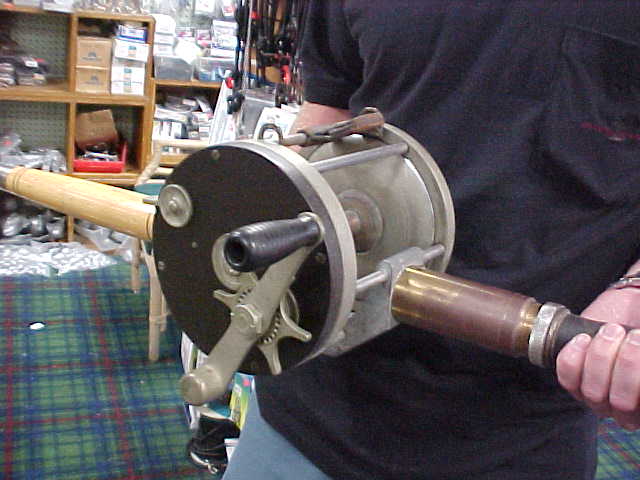
But the reel, a 12/0 Vom Hofe, had sustained damage when — even though protected by Farrington’s hands — it had slammed against the boat. The big marlin sounded, came up and sounded again, and, “By this time it was getting dark and really blowing. The seas were very high and it was impossible to plane [up] the fish. … Again the reel went out and [the fish] got down to about 900 feet.”
As the boat drifted farther and farther from Cabo Blanco, the marlin took the 39-thread linen line down to the spool five times; each time Farrington regained line despite the reel having no drag left. “The simple knot we use to tie the line onto the spool did not break. But at 7:44 p.m., the fish again took out the 100 or so yards Farrington had recovered — the handle whirring back in the process to crack his already suffering hands — and this time, the knot gave.
THIS GREAT FISH, WHICH RANKS AMONG THE LARGEST I’VE EVER SEEN, WAS STONE DEAD IN THOUSANDS OF FATHOMS OF WATER SOME 25 MILES OFF CABO BLANCO,” FARRINGTON RECOUNTS REGRETFULLY.
He presumed by then that he’d been fighting only the weight of the fish which had died in the depths. “This great fish, which ranks among the largest I’ve ever seen, was stone dead in thousands of fathoms of water some 25 miles off Cabo Blanco,” Farrington recounts regretfully. That night, Farrington discovered he’d broken a finger on his left hand and possibly broken bones in his right hand as well.
Nevertheless, he wanted only to get back out on the hunt the next day, when, “much to my chagrin, [I] found that some of the struts in the boat had been severely strained and the motors were in very bad shape. Five hours of backing into these seas had been too much for the craft.” It would be more than a week before the boat was repaired.
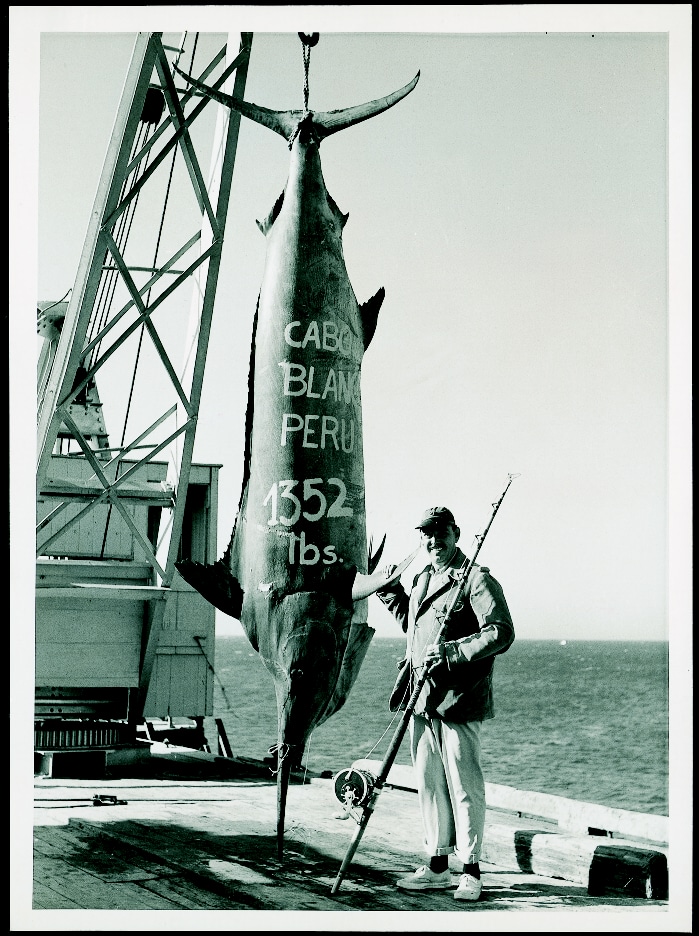
A year later, in April 1952, Glassell caught the cape’s first grander, with 25 pounds to spare. But his record proved short-lived: Just four months later, Tom Bates brought in a 1,060-pounder. The same month (August), Glassell upped the ante, boating a black weighing 1,090 pounds. The next month, Farrington put himself on top of the board with a 1,135-pound marlin.
That meant in just four months, with just a couple boats (at best) on the water any given day, four granders had come in from just off Cabo Blanco. But the best was yet to come; if the cape’s fishing in 1952 had piqued international interest, six months in 1953 would truly rock the fishing world.
The first half of the year offered no hint of events ahead: Through June, not a single grander was taken. That changed in July when Tom Bates managed to bring in to the Cabo Blanco Fishing Club the biggest black ever caught to date anywhere in the world. It weighed 1,352 pounds.
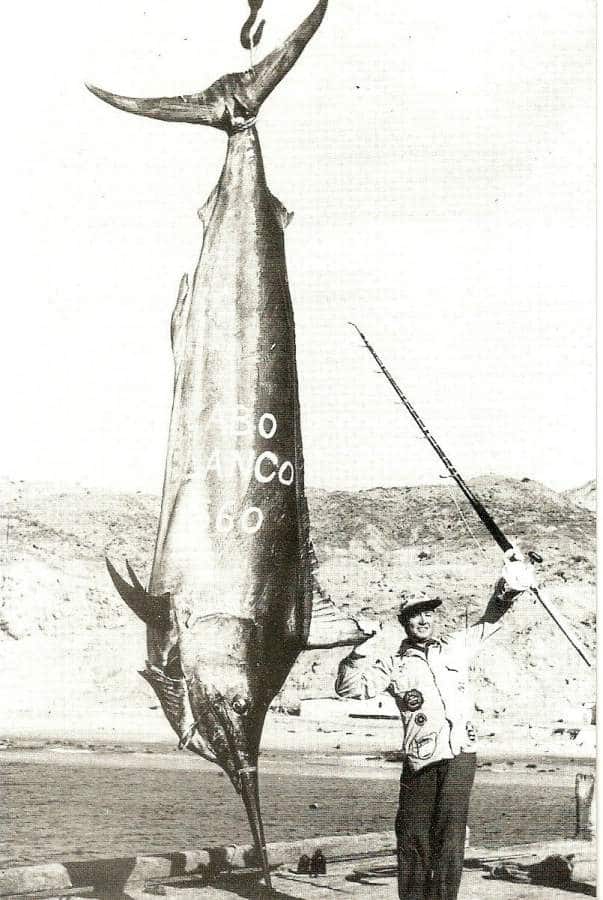
Then, on August 4, 1953, Glassell shattered that record and made history — with a 1,560-pound black marlin. It’s a story that lives on. From the April 2000 Smithsonian Magazine: “Glassell’s ‘Mount Everest’ of a fish was caught with a 5-pound mackerel bait — a mere bonbon for a fish known to down a 200-pound yellowfin tuna in one fell swoop.”
But that “bonbon” was enough. The size of this fish wasn’t kept a secret by the depths: During the one-hour-and-45 minute fight, she cleared the water 49 times, leaving little doubt that she would dwarf a mere grander. Hundreds of thousands of people have actually seen that fish jumping, though they don’t realize it. Not long before that, Warner Brothers had begun asking where in the world it could get footage of a fish the size of Santiago’s mother-of-all-marlin for the movie of The Old Man and the Sea, starring Spencer Tracy, then in production.
“Cabo Blanco was the only answer,” Farrington says in his 1971 book, Fishing with Hemingway and Glassell. And with incredible good fortune, a studio film crew happened to be on hand when Glassell hooked the 1,560-pounder. Much of the fish’s incredible display is shown as the Old Man’s marlin (supposedly a Cuban blue marlin) in the film.
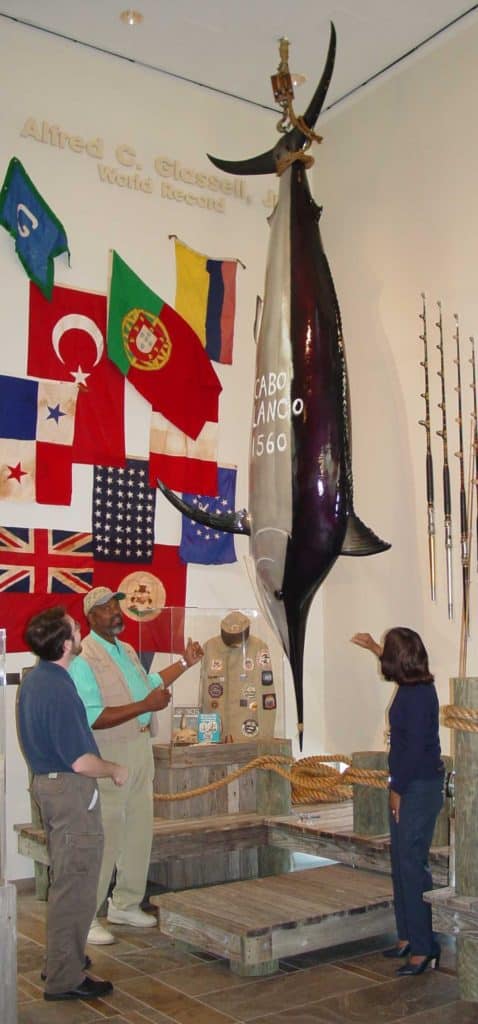
WHILE 1953 WAS THE YEAR OF THE COLOSSUS IN BLACK MARLIN FISHING, 1954 WOULD BE CABO BLANCO’S BANNER YEAR FOR SHEER NUMBERS OF GRANDERS, WITH 16 FISH BETWEEN 1,005 AND 1,500-PLUS POUNDS TAKEN.
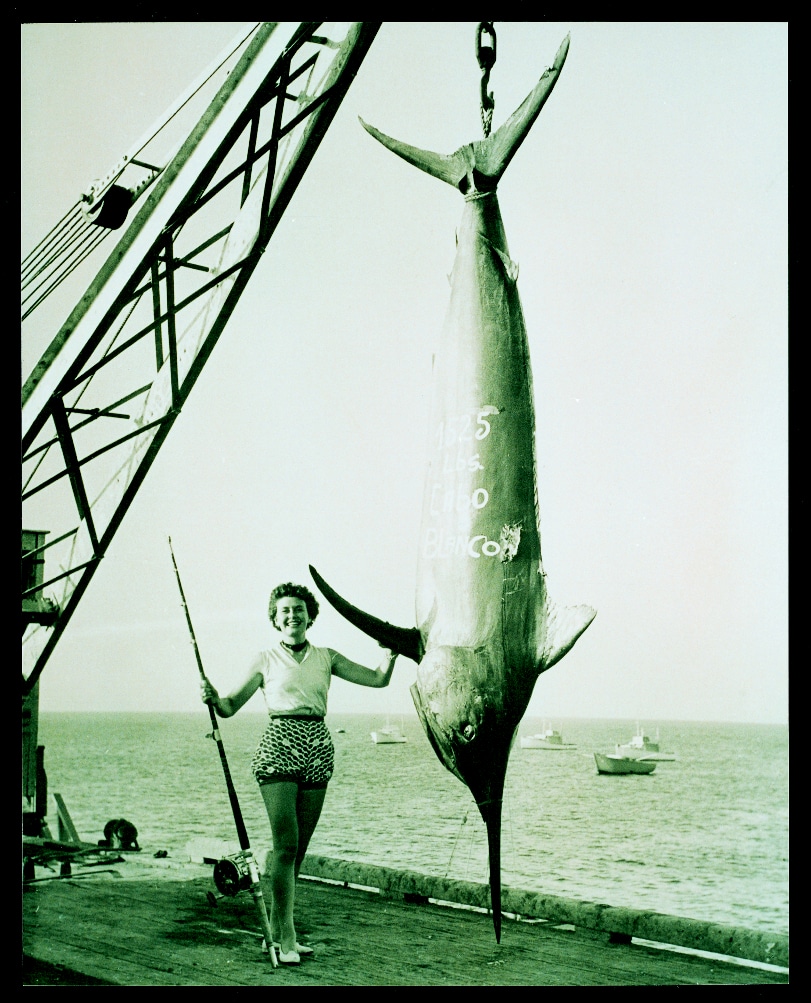
While 1953 was the year of the colossus in black marlin fishing, 1954 would be Cabo Blanco’s banner year for sheer numbers of granders, with 16 fish between 1,005 and 1,500-plus pounds taken.
In fact two marlin that year threatened Glassell’s monster, a 1,525 (caught by a New York public relations expert, Kimberley Wiss — it remains the 130-pound test women’s record to this day) and a 1,540. Glassell that year reported seeing, but never hooking, marlin that were clearly much larger than his 1,560. Another remarkable feat occurred in ’54 when Carolyn Meyer brought in a 1,240-pound black one morning in May; the boat went right back out and that afternoon her husband, Maurice, bested a 1,200-pounder.
For perspective, consider one of the world’s premier big-marlin fisheries. It took Kona’s fleet of about 75 active (and modern, well-equipped) charter boats an entire decade (the 1990s) to land 16 granders. Two or three occasional charter boats landed 16 granders in one year (1954) off Cabo Blanco.
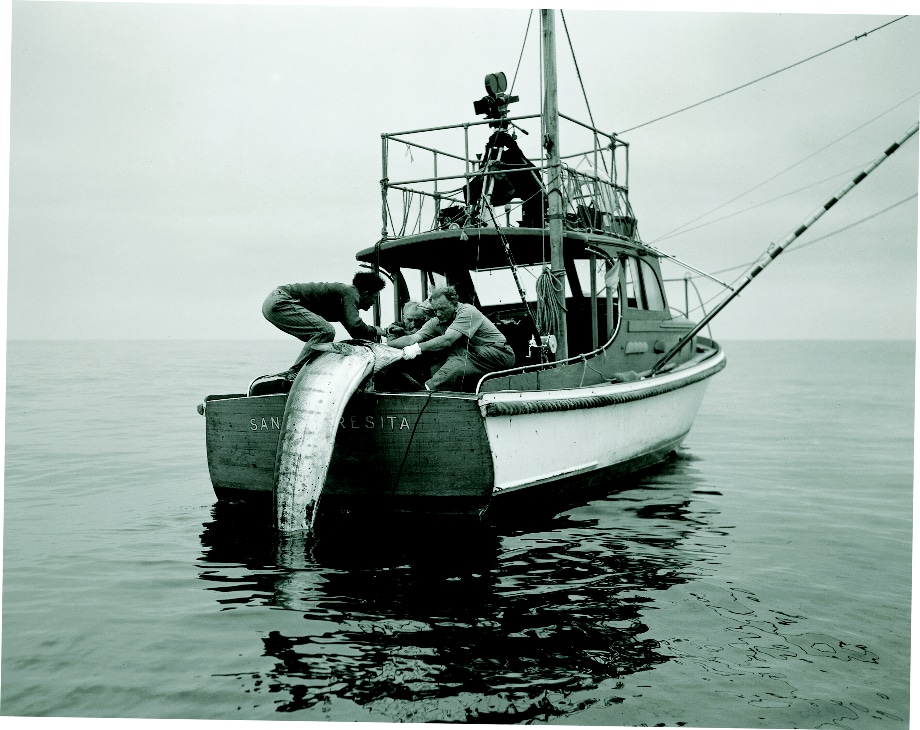
In addition to the huge marlin at the cape, anglers who visited in pursuit of them also proved newsworthy. For example, the late slugger Ted Williams came in 1954 — and promptly caught the fish of a lifetime, a 1,235-pounder. The next year, Ernest Hemingway showed up to try his luck. Papa himself managed “only” a 910-pounder.
But world-class catches weren’t limited to black marlin, by any means. In fact, Farrington relates one of the days the Warner Brothers’ film crew was out on a boat with a great Peruvian angler when he hooked a striped marlin estimated at 500 pounds. That made it the biggest anyone there had ever seen and what could still today be the all-tackle record. But one of the studio men “simply reached over and cut the fish off with a knife, saying, ‘Striped marlin — we don’t want them.’ ”
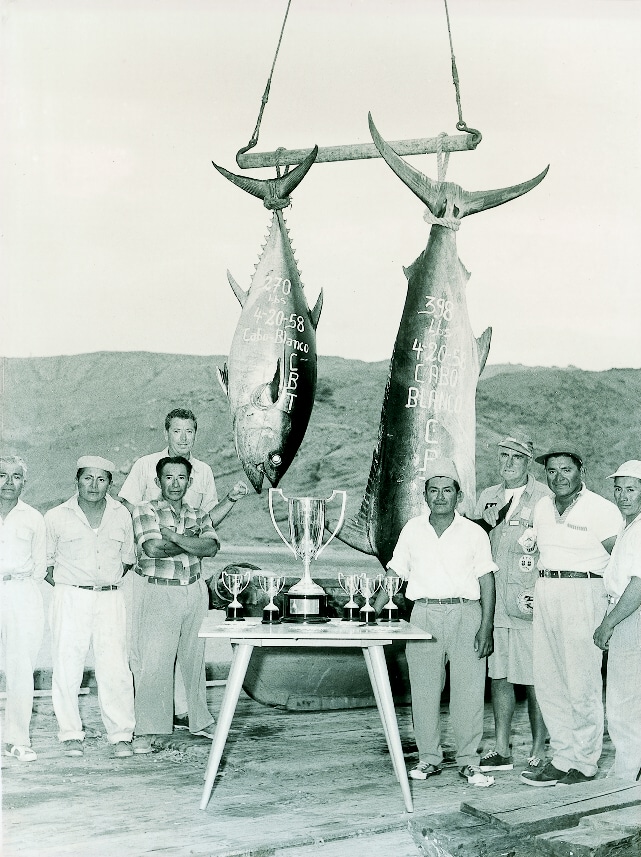
Although often an afterthought, bigeye tuna large enough to punish most men prowled the coast. As with black marlin, these proved routinely to be some of the most monstrous bigeye ever seen, with several 400 pounds or more brought in. Like Glassell’s black, the 435-pound bigeye taken in 1957 by Russel Lee remains the all-tackle world-record for the species. No place in the world offered so many shots at swordfish, while striped marlin and mako and thresher sharks provided more incidental-catch thrills. Anglers trying their hand inshore were catching three-digit roosterfish, as well as huge snook and corvina.
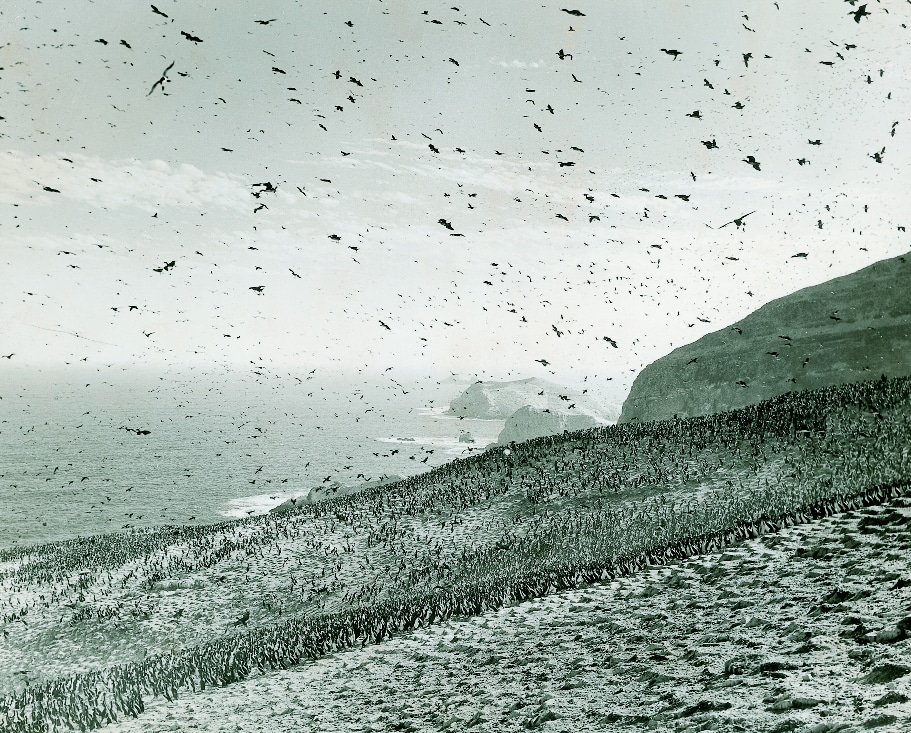
In fact, no one could visit here without being astounded by the sheer volume of sea life. “I’ve never fished any place in the world, ever, that had that abundance of life of all sorts — not just fish — at that time [in the 1950s],” Glassell, who has traveled widely in search of trophy pelagics, told me. “The entire spectrum of life in the sea just went through there like a parade. We saw whales of all types, dolphins, tunas, marlins, manta rays — sometimes the ocean was full of rays — and the birds! Gannets, frigates, petrels, gulls — it was simply unbelievable, the abundance of food, and the entire food chain [it attracted].”
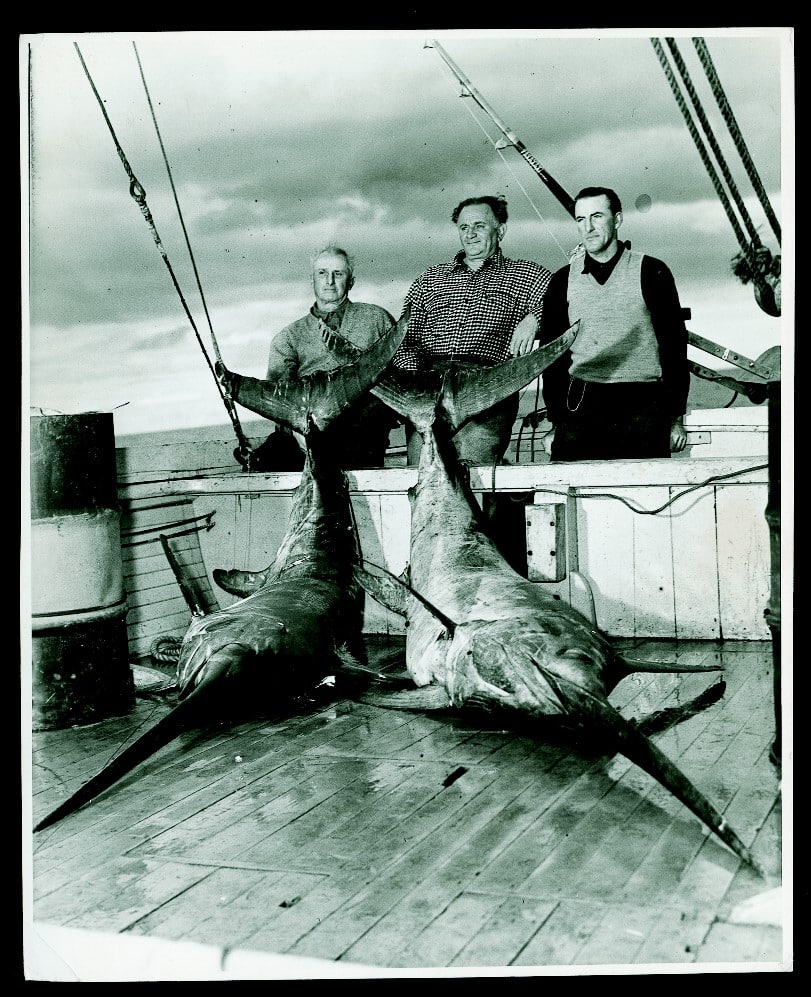
For predators of all sizes and kinds — including the big-game anglers — Cabo Blanco seemed to qualify as heaven on earth. But that heaven was about to fall from granders and grandeur, and more quickly than anyone might have thought possible.
The existence of so many great marlin, large enough to dwarf mere men; all the tuna, swordfish and sharks that swarmed off Cabo Blanco; and one of the greatest industrial fisheries ever known — all this owed thanks to a tiny fish — the Peruvian anchovy or anchoveta (Engraulis ringens). Its biomass was simply staggering, thanks to the most productive of the world’s great nutrient-rich upwellings, off northern Peru.
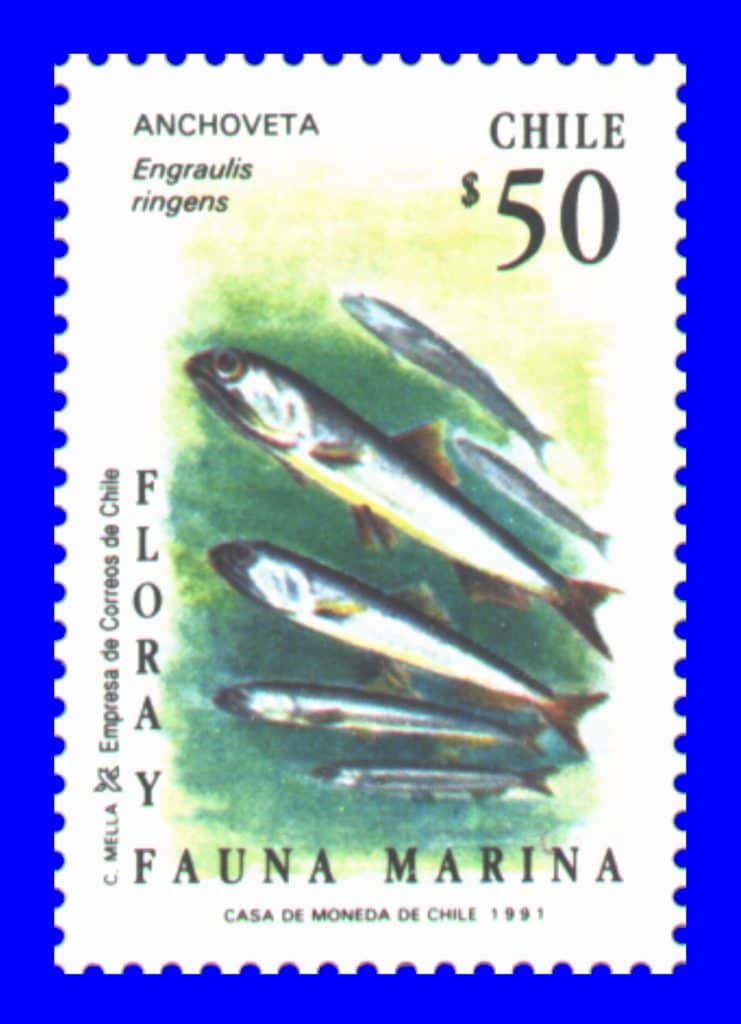
Initially, men came here not to harvest fish. Rather, the rich guano left on shore from the hundreds of thousands of seabirds that fed on the anchoveta attracted the interest of these harvesters. However, a fishery for anchovetas (used for fish meal) off northern Peru began in the early 1950s and, as more and more boats (as many as 1,400) came into the fishery (with the crash of California sardine stocks off California in the 1940s leaving many large, idle seiners eager to travel to Peru). That peaked in 1969, a year that saw more than 12 million tons of the small silver fish taken in what had become the largest fishery in the world — accounting for nearly one-quarter of the world’s industrial fisheries production.
THE ANCHOVY FISHERY HERE PEAKED IN 1969 WITH 12 MILLION TONS OF THE SMALL SILVER FISH HARVESTED IN THE LARGEST FISHERY IN THE WORLD.
But 1969 marked the beginning of the end of the huge fishery for anchoveta — and in dramatic fashion. The annual catch plummeted in just four years to less than 2 million tons. Why?
The consensus now seems to blame two factors constantly problematic in many high-seas fisheries: ocean conditions and overfishing.
Ocean conditions changed dramatically in the early 1970s when the warm waters of an unusually severe El Niño-Southern Oscillation (ENSO) disrupted the upwelling and most of the nutrients it brought. By 1983, the catch of anchoveta that once teemed off this coast had fallen to nearly zero.
In fact, various species of anchovies and sardines are inherently unstable around much of the world, often supporting fisheries for a couple decades until conditions change and the populations collapse, finding other areas suitable. Then their numbers may mushroom, growing almost as quickly as they collapse.
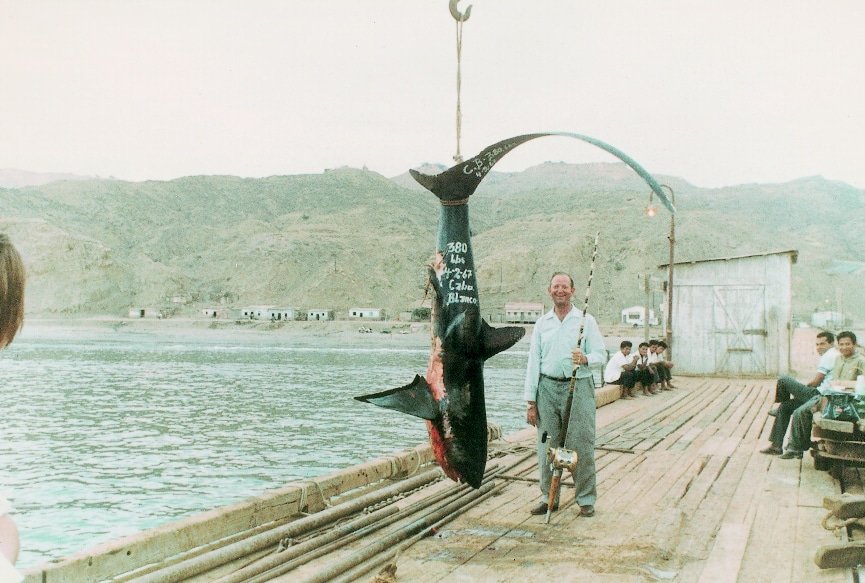
But scientists believe that overfishing also played a role in the crash of Peru’s anchovy populations. In 1970, a report from a panel of fisheries economists warned that increasing pressure on anchoveta stocks from the over-capacity of boats and processing factories ashore had put the resource in peril. Its words proved prophetic, and during the same year of that report, the catch began to decline markedly — two years before the onset of ENSO-warmed waters.
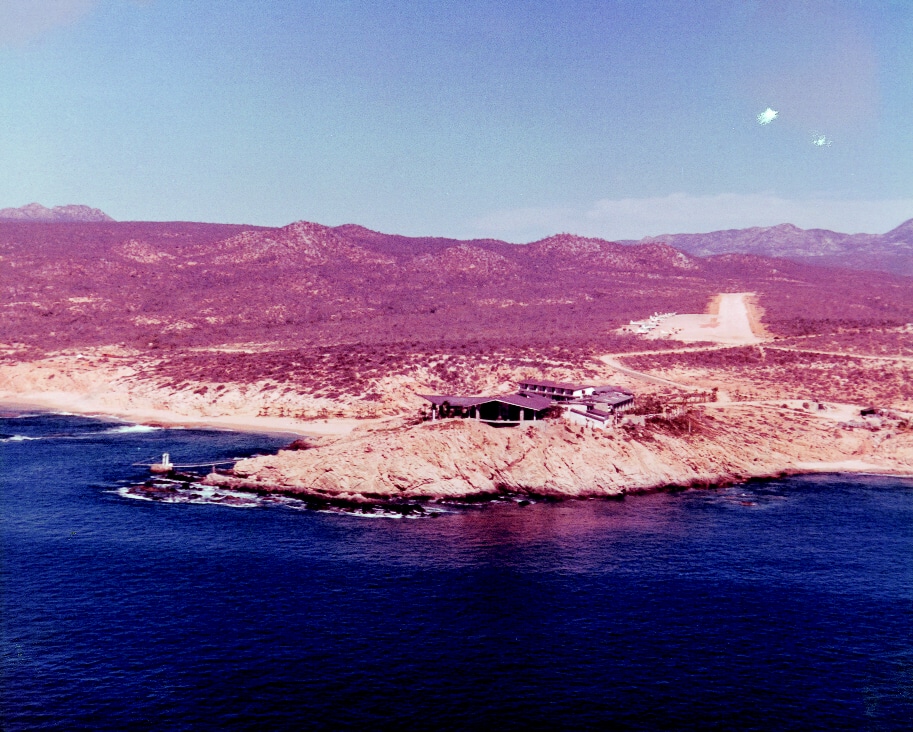
Today, the Cabo Blanco Fishing Club remains an effective symbol of a golden era lost. The buildings remain, but in disrepair, no longer a sanctuary for wealthy globe-trotting big-game enthusiasts. A group is working actively to resurrect a club at Cabo Blanco as an open fishing resort with the goal of — and with boats to — once again create a world-class big-game sport fishery here. Billfish and tuna do ply the waters offshore; the few sport-fishing boats that have ventured by in recent years report catching fish. In terms of abundance and size, big pelagic predators may no longer linger here as they did in the 1950s and ’60s. But they could return, particularly if (some would say, inevitably, when) vast swarms of anchovetas make a comeback — and even that would hardly guarantee the return of so many large predators.
What remain at this point of Cabo Blanco are memories — for anglers, memories of the greatest fishery for huge marlin the world has ever known.
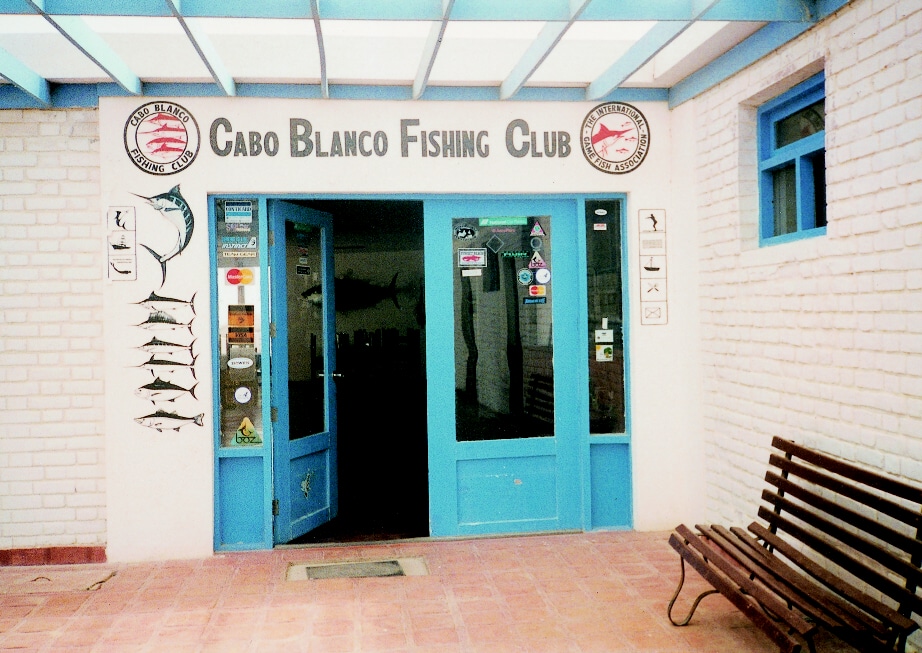
LIFE AT THE CLUB
Excerpts from the Cabo Blanco Fishing Club Yearbook, 1959
Striped marlin are abundant, and as many as 26 have been sighted tailing in one day. Swordfish are everywhere. Most of them are likely to be a bit farther offshore, where the water is colder.”
“Phases of the moon and the tides apparently have no bearing on the fishing at Cabo Blanco.”
“There are quantities of food for the big and little fish everywhere off Cabo Blanco, on the bottom and the surface. There are vast squid beds [that] weigh up to 100 pounds or more.”
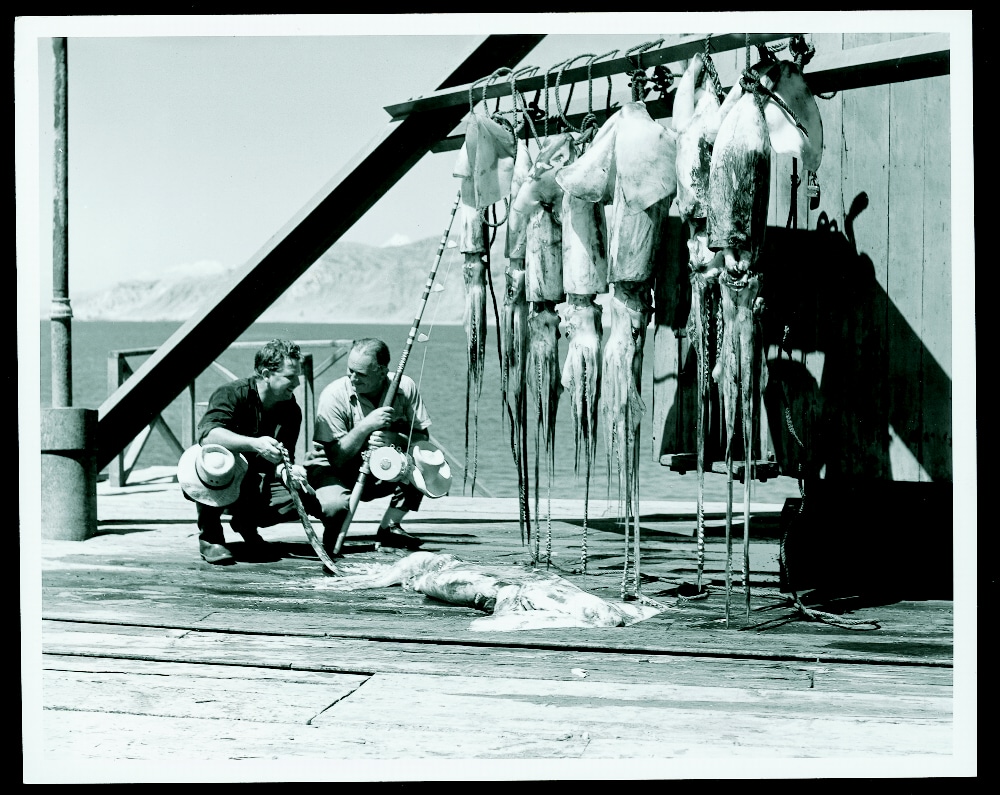
“Part of the pleasure of angling here is that there is no trolling or watching the bait for tiresome periods. All the fish, with the exception of tuna, are sighted on the surface.”
“Some day someone will get a picture of the first 2,000-pound [sport-caught] black marlin. (A marlin which weighed 2,250 pound was harpooned off Cabo Blanco, and it is just a matter of time before some angler takes his one-ton trophy.)”
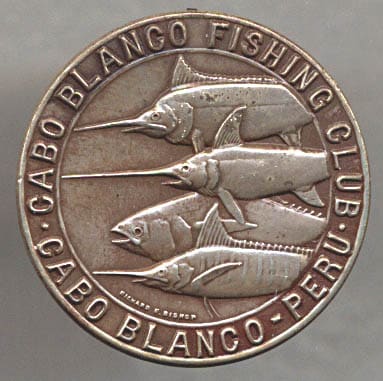
SOME OF THE CLUB RULES
- Anglers may not use 3-thread line or line testing under 18 pounds on club boats.
- No fishing for black marlin is allowed with line testing under 80 pounds, or less than the usual 24-thread.
- Fishing hours are from 9 a.m. to 5 p.m. No boats can stay out later than 5 p.m., unless fighting a fish.
- “Dress is casual. It is not required that ties or coats be worn at any meal.”
- “Ladies are welcomed at the club, whether they are anglers themselves or accompany a member or his guest and only to observe….”
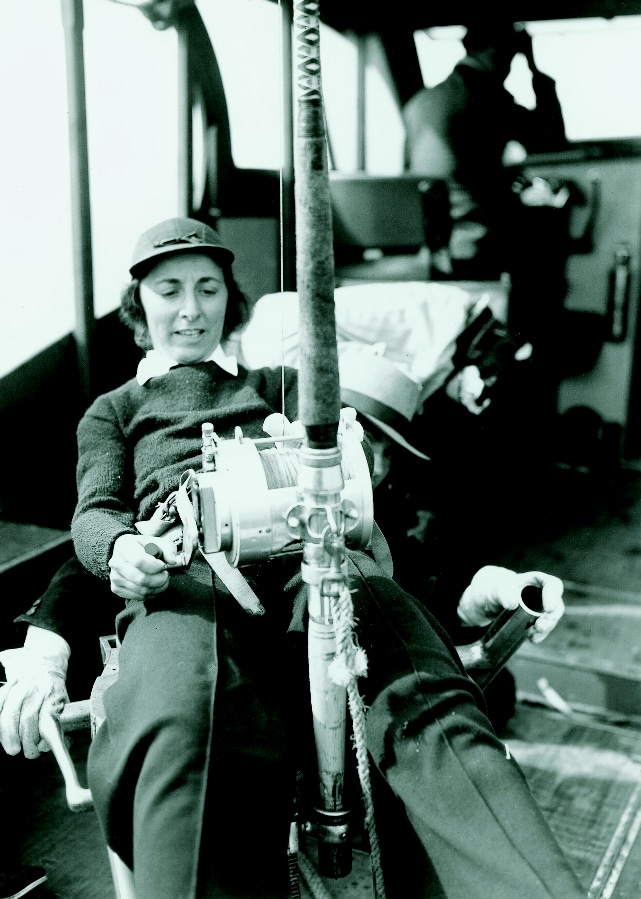
THE FACILITY AND BOATS
- “The new clubhouse has a broad terrace, a sun deck, bar, attractive dining room and a superbly equipped tackle room with lockers for members and their guests. There are also workshops and workbenches where tackle may be worked over.”
- “Drinking water at the club is pure. … The menu includes … fish, native lobster and shrimp. The climate is a healthy one (no member or guest has ever been ill at the club).”
- “The boats at Cabo Blanco were built to specifications of club members, who have had experience in just about every kind of craft, fishing all parts of the world. … These boats were built at Wedgeport, Nova Scotia, to the world-famous Cape Island design.”
- “Pescador Dos is 40 feet long with a 12-foot beam and has an enclosed cabin and a flying bridge. Petrel, Miss Texas and Miss Peru are 38 feet long with an 11-foot beam and up-top controls. … Each boat is powered with two Chrysler Crown engines which give speeds of up to 16 miles an hour.”
